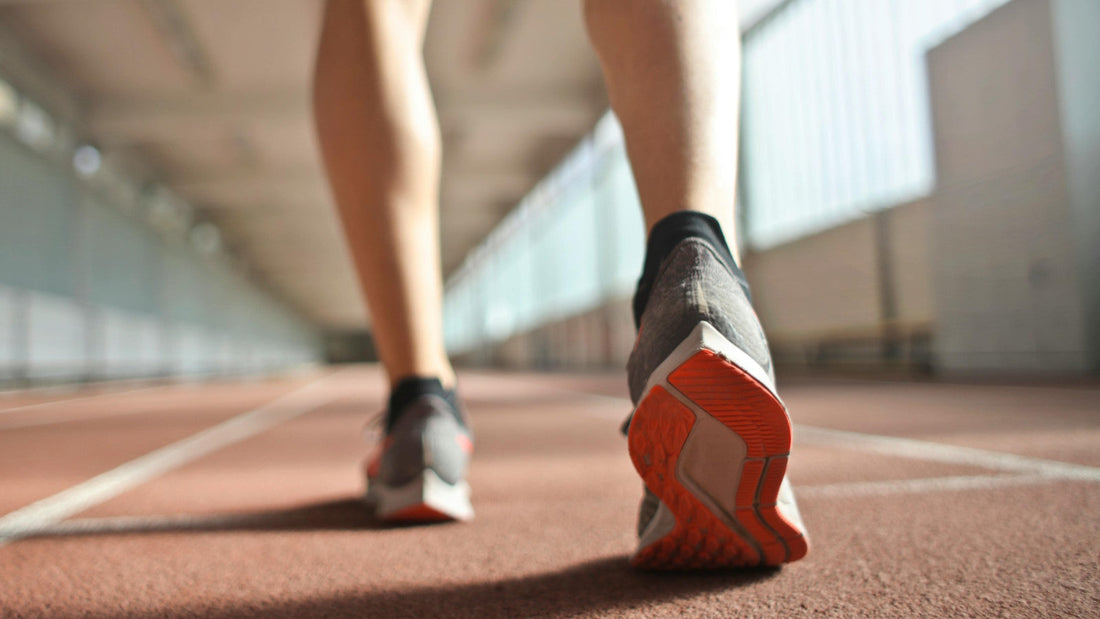Your feet are inflamed, scaly, and getting in the way of your goals. Is it athlete’s foot, that sneaky fungal infection, or could it be psoriasis, the autoimmune skin drama queen? Although both can look, feel, and itch pretty similarly, they need very different treatments. Here’s how to tell them apart with confidence.
The potential culprits
Athlete’s foot (tinea pedis) is a contagious fungal infection caused by dermatophytes that thrive in warm, damp environments—think sweaty socks and gym floors. Symptoms include redness, peeling, itching, cracking between toes, and even blisters or ulcers in severe cases.
Psoriasis, specifically palmoplantar psoriasis, is an autoimmune skin condition. It causes skin cells to overproduce, resulting in thick, silvery scales and inflamed patches commonly on the soles of your feet and sometimes toes. Nail pitting and joint stiffness (psoriatic arthritis) can also tag along.
Symptoms of Athlete’s Foot
Here’s what to look out for with athlete’s foot:
- Itching and burning between your toes or on the soles of your feet.
- Peeling or flaking skin, often between the toes.
- Redness or cracking, which can sometimes lead to painful open areas.
- Occasionally, blisters may leak fluid.
- Athlete’s foot can even spread to your toenails, causing them to thicken or discolor, or to your hands if left untreated.
Athlete’s foot usually screams, "Hi, I’m a fungus!" the second it starts, as itchiness tends to hit hard and fast. If that wasn’t enough of a warning, the peeling, cracking, and redness often seal the deal.
Causes of Athlete’s Foot
Athlete’s foot comes from—you guessed it—fungal spores. These microscopic troublemakers love sweaty feet and can be transferred through:
- Walking barefoot in moist communal areas, like gyms.
- Sharing towels, shoes, or socks.
- Wearing unbreathable shoes that trap moisture.
Spoiler warning: Athlete’s foot isn’t just for athletes. Any active person with sweaty or damp feet can be at risk.
What Is Psoriasis on Feet?
Psoriasis, on the other hand (or foot, really), is not a fungus. It’s an autoimmune condition where your body produces skin cells waaaay too quickly, causing them to build up into itchy, scaly patches. Psoriasis is a chronic condition, meaning it loves long vacations on your skin and isn’t contagious.
Symptoms of Psoriatic Feet
Psoriasis can also affect the feet, specifically in the form of plaque psoriasis, which is the most common type. Symptoms include:
- Thickened, scaly skin that looks silvery and can crack painfully.
- Inflamed patches that are red or purple (depending on your skin tone).
- Occasional bleeding from the cracked areas.
- Tenderness and itchiness, although it’s usually less intense than athlete’s foot itch.
Unlike the localized nature of athlete’s foot, psoriasis may also appear on other areas of the body, like your scalp, knees, elbows, and hands.
Causes of Psoriasis
The exact cause of psoriasis is still a mystery, but we do know it’s an autoimmune condition. That means your immune system—doing what it thinks is helpful—starts overproducing skin cells. This can be triggered by:
- Genetics (thanks, family tree).
- Stress levels that make you want to scream into a pillow.
- Skin injuries like cuts or sunburn.
- Certain medications or infections.
Oh, and unlike athlete’s foot, psoriasis isn’t something you can "catch" from that one questionable pair of rental bowling shoes. Phew.
Athlete’s Foot Vs Psoriasis: Key Differences
Although similar in some ways, they don’t have much in common. If you get the diagnosis wrong, the treatment prescribed could make your symptoms worse.
Is it contagious? One is, one isn’t.
- Athlete’s foot: Contagious. You can catch it from floors, towels, or sharing shoes.
- Psoriasis: Not contagious—blame your genes, not your gym buddy.
Where It Strikes
- Athlete’s foot: Loves between toes, soles, and anywhere damp. Starts small but can spread.
- Psoriasis: Can hit anywhere—knees, elbows, scalp, even nails. On feet, it often targets soles or causes pitted, crumbly nails.
Look & Feel
- Athlete’s foot: Red scaly rash, peeling skin (like wet paper), itchy and burning, smelly (thanks, fungus)
- Psoriasis: Thick silvery scales, dry and cracked, itchy and painful, no extra odour.
- Bleeding cracks possible
Can You Have Athlete’s Foot and Psoriasis at the Same Time?
Unfortunately, yes. It’s rare but possible to have both conditions at once, which can make diagnosis even more of a headache. A professional can sort it out and recommend the right combination of treatments.
Treating and Preventing Athlete’s Foot
If you’re stuck battling a fungal invasion, here’s how to win the war:
- Keep your feet clean and dry. Wash them daily and dry, dry DRY well between your toes to banish moisture.
- Use antifungal treatments. This is where our Funga Shield comes in - an all-natural athlete's foot powder that keeps the fungus at bay without harsh chemicals. Just sprinkle it on your feet before heading out to kill off lurking spores. Easy, right?
- Switch up your footwear. Choose breathable shoes and change socks regularly—especially after workouts.
Pro tip: Don’t forget to clean your shower floors—spores love hanging out in damp places!
Managing Psoriatic Feet
Treating psoriasis is slightly trickier because it’s not always about the skin, but tackling triggers like stress or injuries. Here’s what you can do:
- Moisturize religiously. Dryness worsens cracks, so use a soothing foot cream like Sole Saviour. Designed with natural, gentle ingredients, it’s perfect for hydrating sensitive, inflamed skin.
- Avoid skin injuries. Treat your feet kindly by wearing cushioning shoes and preventing blisters.
- Keep stress in check. Meditate, stretch, nap—whatever keeps your cortisol levels happy.
- Speak to a dermatologist. If your psoriasis is intense, you may benefit from prescription treatments like topical ointments or phototherapy.
Know Your Enemy, Save Your Soles
A skin scrape test or biopsy is the only way to be 100% sure, but whether it's fungus or flakes, Funga Shield and Sole Saviour have your back (or, ahem, your soles) with 100% natural, filler-free support for strong, healthy feet.





